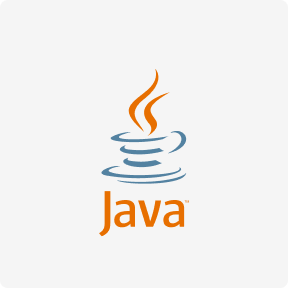Docker Swarm What is Docker Swarm
Any kernel updates to this system should include the installation of the appropriate linux-image-extra package version that coincides with the new kernel version. If this package is not updated as well, some issues may arise with Docker’s ability to mount volumes. If the firewall rules were configured correctly, you now have a functioning Docker Swarm, with all the nodes synchronized. If we’re to deploy the Dockercoins application on the Swarm cluster that we’ve built, then we need the Docker images for each of the services. That means that we need to build each image using the source code, and an appropriate Dockerfile.
- This Docker orchestration balances containerized application workloads, ensuring containers are launched on systems with adequate resources, while maintaining necessary performance levels.
- These keys are ignored by docker-compose, so they won’t affect your development environment, but are used by docker stack.
- In a docker swarm with numerous hosts, each worker node functions by receiving and executing the tasks that are allocated to it by manager nodes.
- Once the Cluster gets established successfully, an algorithm is used to choose one of them as the leader node, and that algorithm is known as the “Raft consensus”.
Administrators and developers can easily add or remove container iterations as compute demands vary with a docker swarm cluster. The user can deploy manager and worker nodes at runtime in the Docker engine’s swarm mode. A node is merely a physical or virtual machine that runs one instance of Docker Engine in Swarm mode. Based on its configuration, this instance can run as a worker node or as a manager. A worker node is responsible for accepting workloads (deployments and services).
Docker Compose
Conversely, this lets you point a load balancer (such as an ELB) at all of the nodes in the swarm without needing to worry about what’s running where. You can also use https://www.globalcloudteam.com/ in production if you have a stack that is moderately low maintenance (like 3-10 nodes with less than 100 containers running). For larger workloads, Docker Swarm quickly falls behind K8s, which has better tools, support, and documentation at that scale. Consider a situation where a manager node sends out commands to different worker nodes. Docker Swarm schedules tasks using a variety of methodologies to ensure that there are enough resources available for all of the containers. Through a process that can be described as automated load balancing, the swarm manager ensures that container workloads are assigned to run on the most appropriate host for optimal efficiency.

In general, all Nodes are the worker nodes even the manager node is also a worker node and capable of performing the task/operations when required resources are available for them. The Docker Swarm is essentially a kind of tool which allows us to create and schedule the multiple docker nodes easily. The docker swarm can also be used for a vast number of docker nodes.
The Four Critical Elements in a Docker Environment
Swarmkit is a separate project which implements Docker’s orchestration layer and is used directly within Docker. One of these machines is a manager (called manager1) and two of them are workers (worker1 and worker2). With the previous commands executed, we now have a basic two-node Swarm Cluster. We can verify the status of this cluster by executing the docker command with the node ls options.
For someone who simply wishes to use the “services” features of Kubernetes and doesn’t need some of its other capabilities, docker swarm Mode may be an easier alternative. We can see that when the service was created as a Global Service, a task was then started on every node worker within our Swarm Cluster. With the service now created, we can see how Docker distributed our tasks for this service by once again executing the docker command with the service ps options. A replicated service is a Docker Swarm service that has a specified number of replicas running.
Why use Docker Swarm?
A service is the definition of the tasks to execute on the manager or worker nodes. It is the central structure of the swarm system and the primary root of user interaction with the swarm. A node is an instance of the Docker engine participating in the swarm. You can run one or more nodes on a single physical computer or cloud server, but production swarm deployments typically include Docker nodes distributed across multiple physical and cloud machines. Docker will update the configuration, stop the service tasks with out of date configuration, and create new ones matching the desired configuration.
Kubernetes, however, has long-since surpassed Swarm in usage, and has its own environments and adherents. Finally, we’ve instructed Docker to run a single instance of Redis somewhere in the swarm. It doesn’t matter where, as our web containers are routed automatically to it when they request the Redis host. To run Docker in swarm mode, you can either create a new swarm or have the container join an existing swarm.
Kubernetes vs. Docker Swarm
This way, the manager node can maintain the desired state of the cluster. Swarm never creates individual containers like we did in the previous step of this tutorial. Instead, all Swarm workloads are scheduled as services, which are scalable groups of containers with added networking features maintained automatically by Swarm. Furthermore, all Swarm objects can and should be described in manifests called stack files. These YAML files describe all the components and configurations of your Swarm app, and can be used to easily create and destroy your app in any Swarm environment. Certain network ports must be opened on the nodes that will be be part of a cluster for the cluster to function properly.

Manager tokens should be strongly protected, because any access to the manager token grants control over an entire swarm. You can promote a worker node to be a manager by running docker node promote. For example, you may want to promote a worker node when you take a manager node offline for maintenance. You can also demote a manager node to a worker node using node demote. For more details on node commands in a swarm cluster, see the Docker node CLI reference.
Features of Docker Swarm
Application security is another place where Swarm makes things a bit simpler than Kubernetes, though sometimes at the cost of more complex capabilities. For example, Swarm includes TLS networking out of the box, and all access control is handled through that. So it’s easy to use, but you don’t get the full granular control that Kubernetes gives you with RBAC, admission controllers, policies, and so on. For example, Swarm makes operational challenges a bit easier, as the same Swarm configurations can run in multiple environments. Networking in Swarm is also simpler, which can be an asset (easier to understand) or a liability (much less powerful and/or flexible) depending on what you’re trying to accomplish. Mirantis Kubernetes Engine, which is Mirantis‘ enterprise distribution of Swarm, enables customers to deploy both Kubernetes and Swarm nodes (or both), so they can choose whatever works best for them.
Manager nodes also perform the orchestration and cluster management functions required to maintain the desired state of the swarm. Manager nodes elect a single leader to conduct orchestration tasks. Swarm provides many tools for scaling, networking, securing and maintaining your containerized applications, above and beyond the abilities of containers themselves. At this point, we have the redis service setup to run with 2 replicas, meaning it’s running containers on 2 of the 3 nodes. What’s interesting about this is that our connection was successful.
Monitor and analyze your Docker containers with Sumo Logic
This is useful for common services such as Redis that may be leveraged internally by other services. If we wanted our redis service to consist of an instance on every node worker, we could do that easily by modifying the service’s number of desired replicas from 2 to 3. This would mean however that with every node worker we add or subtract, we will need to adjust the number of replicas. When Docker publishes a port for a service, it does so by listening on that port across all nodes within the Swarm Cluster. When traffic arrives on that port, that traffic is then routed to a container running for that service.

Seems a little quiet over here
Be the first to comment on this post
Write a response